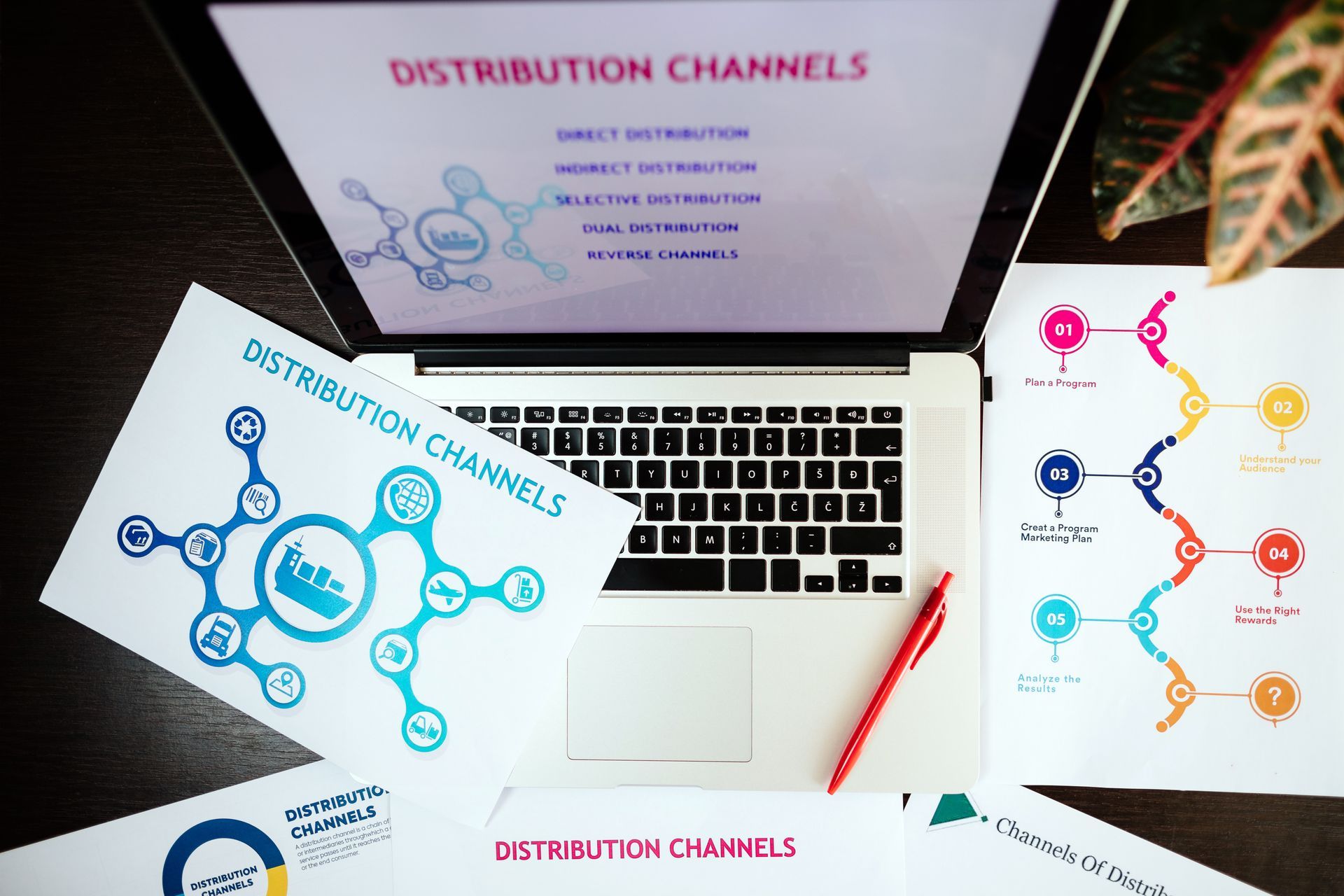Understanding Multi-touch Attribution
As consumers become increasingly connected and empowered, their journeys to purchase have become more complex. Gone are the days of simple linear customer journeys, with consumers now interacting with brands across multiple channels and devices before making a purchase. This has made it increasingly difficult for marketers to understand each touchpoint's role in driving conversions.
Enter multi-touch attribution, a marketing measurement approach that allows marketers to attribute credit to multiple touchpoints in a customer's journey. By using multi-touch attribution, marketers can better understand the effectiveness of their marketing efforts and identify which channels and tactics are most effective at driving conversions.
In this article, we will explore how marketers can better understand multi-touch attribution and use it to optimize their campaigns for maximum return on investment. We will cover key strategies such as analyzing customer journey data, using attribution modeling tools, testing and optimizing, and working with data specialists.
So, read on to learn how you can get the most out of multi-touch attribution and drive better results for your business.
Key ways that marketers can better understand multi-touch attribution
Analyze customer journey data
This is important for understanding multi-touch attribution because it allows marketers to see the complete picture of a customer's journey. By analyzing data on all touchpoints that a customer interacts with, marketers can identify patterns and trends that may not be apparent when looking at a single touchpoint. This can help them understand how different touchpoints contribute to conversions and identify areas where they can improve their marketing efforts.
Marketers can use various tools and techniques to collect and analyze customer journey data, such as web analytics, customer surveys, and customer relationship management (CRM) systems. Using these tools, marketers can gain insights into which channels are most effective at driving conversions, which messages resonate with customers, and which points in the journey are most critical for driving conversions.
Analyzing customer journey data is essential to understanding multi-touch attribution and can help marketers optimize their campaigns for maximum return on investment.
Use attribution modeling tools.
Attribution modeling tools help marketers understand the value of each touchpoint in the customer journey and how they contribute to conversions. These tools typically use algorithms to assign a specific value to each touchpoint based on its impact on the conversion.
There are several different types of attribution models, each of which assigns credit to touchpoints differently. For example, the last-click model gives all the credit for a conversion to the last touchpoint a customer interacted with before converting. On the other hand, the first-click model gives all the credit to the first touchpoint with which a customer interacts.
By using attribution modeling tools, marketers can better understand the value of each touchpoint and how it contributes to conversions. This can help them identify the most effective channels and tactics and allocate their resources and budget.
Test and optimize
Testing and optimizing are essential to understanding multi-touch attribution and getting the most out of it. By experimenting with different attribution models and analyzing the results, marketers can better understand how different touchpoints contribute to conversions and identify the most effective channels and tactics.
There are several ways that marketers can test and optimize their campaigns using multi-touch attribution. For example, they can:
- Experiment with different attribution models: By testing other attribution models, marketers can see how each model assigns credit to different touchpoints and identify the model that best reflects the customer journey.
- Test different campaign elements: Marketers can also test various aspects of their campaigns, such as messaging, targeting, and creative, to see which elements are most effective at driving conversions.
- Use A/B testing: A/B testing allows marketers to test two versions of a campaign element against each other to see which performs better. This can be a valuable way to identify the most effective tactics and optimize campaigns for maximum ROI.
Work with a data specialist
Working with a data specialist or analytics professional can be a valuable resource for marketers who are not well-versed in data analysis or attribution modeling. These specialists can help marketers understand and make use of multi-touch attribution data in many ways, including:
- Analyzing customer journey data: Data specialists can help marketers collect and analyze customer journey data to understand how different touchpoints contribute to conversions.
- Setting up and using attribution modeling tools: Data specialists can help marketers set up and use attribution modeling tools to understand the value of different touchpoints and identify the most effective channels and tactics.
- Testing and optimizing campaigns: Data specialists can also help marketers test and optimize their campaigns using multi-touch attribution data, identifying the most effective channels and tactics and allocating resources accordingly.
Overall, working with a data specialist or analytics professional can be a valuable resource for marketers who want to get the most out of multi-touch attribution data. By leveraging the expertise of these professionals, marketers can gain a deeper understanding of their marketing efforts and drive better results for their businesses.
How a Customer Data Platform (CDP) can help
CDP, or Customer Data Platform, is software that helps businesses centralize and manage customer data from various sources, such as websites, social media, email campaigns, and more.
One of the main benefits of using a CDP for multi-touch attribution is that it lets you get a complete view of your customer journey and understand how different marketing channels contribute to conversions. This can help you optimize your marketing strategy and allocate your budget more effectively.
Additionally, a CDP can help you personalize your marketing efforts by using the data it collects to create detailed customer profiles. This can help you deliver more targeted and relevant marketing messages, leading to higher conversion rates.
Using a CDP for multi-touch attribution can help you better understand your customers and their interactions with your business, which can lead to improved marketing results and a better overall customer experience.
Find an attribution partner
Here are some benefits of partnering with a software platform like LayerFive that offers services for tracking, measuring, and reporting multi-touch attribution.
- Comprehensive tracking and measurement: A software platform like LayerFive can provide comprehensive tracking and measurement of all touchpoints in a customer's journey, allowing marketers to get a complete picture of how different channels and tactics contribute to conversions.
- Customized attribution models: LayerFive's services can help marketers create customized attribution models that reflect the unique characteristics of their business and customer journey. This can provide more accurate insights into the value of different touchpoints and help marketers optimize their campaigns for maximum ROI.
- Streamlined reporting: A software platform like LayerFive can streamline the tracking and reporting process on multi-touch attribution data. This can save marketers time and resources and allow them to focus on other aspects of their business.
- Expert support: LayerFive's services can provide marketers with access to data analysis and attribution modeling experts who can help them understand and use multi-touch attribution data. This can be especially helpful for marketers who are not well-versed in these areas.
In Conclusion
A software platform like LayerFive that offers services for tracking, measuring, and reporting multi-touch attribution can provide several benefits to marketers. These benefits include comprehensive tracking and measurement, allowing marketers to get a complete view of their customer journey and understand how different marketing channels contribute to conversions.
Customized attribution models enable marketers to tailor their attribution efforts to fit their specific needs and goals. Streamlined reporting makes it easy to analyze and understand attribution data, and expert support ensures that marketers have the assistance they need to make the most of their attribution efforts. Additionally, such a platform can be a cost-effective solution for marketers, providing all of the necessary attribution tools and support in a single, easy-to-use platform.
About LayerFive
If you want to improve your marketing results and allocate your resources more efficiently, consider using LayerFive. This powerful software platform brings together customer data from various sources and channels in a single unified view, helping you identify the most effective marketing strategies and tactics.
With our platform, you can get a complete understanding of your customer journey and be able to make informed decisions about where to focus your marketing efforts. Don't miss out on the opportunity to take your marketing to the next level –
try LayerFive today and see the difference it can make for your business!
You might also like:




